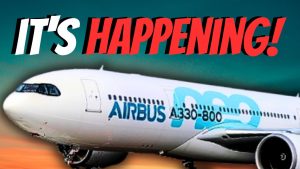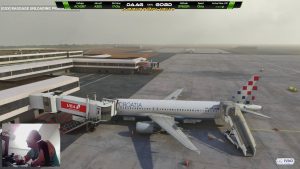Reviews
User Score
Rate This
Descriptions:
Cathay Pacific Airways (traditional Chinese: 國泰航空有é™å…¬å¸; Jyutping: gwok3 taai3 hong4 hung1 jau5 haan6 gung1 si1, SEHK: 0293) is the flag carrier of Hong Kong, with its headquarters and main hub at Hong Kong International Airport. The airline also operates fifth freedom flights from Bangkok and Taipei, its major focus cities. The airline’s operations include scheduled passenger and cargo services to 114 destinations in 36 countries worldwide, including codeshares and joint ventures, with a fleet of 126 wide-body aircraft, consisting of Airbus A330s and A340s, Boeing 747s and 777s. Its wholly-owned subsidiary, Dragonair, operates to 29 destinations in the Asia-Pacific region from its Hong Kong home. In 2009, Cathay Pacific and Dragonair operated 56,000 flights, carrying nearly 25 million passengers and over 1.52 billion kg of cargo and mail.
The airline was founded on 24 September 1946 by American Roy C. Farrell and Australian Sydney H. de Kantzow, with each man putting up HK$1 to register the airline. They named it Cathay Pacific because Cathay was the ancient name given to China; and Pacific because Farrell speculated that they would one day fly across the Pacific. The airline made the world’s first non-stop transpolar flight flying over the North Pole in July 1998, and it also operated the maiden flight to arrive at the new Hong Kong International Airport. In July 2001, it was involved in one of the biggest industrial relations conflicts in its history, by firing 49 of its 1,500 pilots. Twelve of the pilots were eventually offered positions in its cargo division. The airline celebrated its 60th anniversary in 2006; and as of October 2009, its major shareholders are Swire Pacific and Air China. It is reciprocally one of the major shareholders of Air China.
Cathay Pacific is a founding member of Oneworld, with its subsidiary, Dragonair, as an affiliate member of the alliance. The airline was awarded with a Five Star Airline ranking and 2009 Airline of the Year by Skytrax.
The Boeing 747 is a widebody commercial airliner and cargo transport, often referred to by the nickname Jumbo Jet or Queen of the Skies. It is among the world’s most recognizable aircraft, and was the first widebody ever produced. Manufactured by Boeing’s Commercial Airplane unit in the United States, the original version of the 747 was two and a half times the size of the Boeing 707, one of the common large commercial aircraft of the 1960s. First flown commercially in 1970, the 747 held the passenger capacity record for 37 years.
The four-engine 747 uses a double deck configuration for part of its length. It is available in passenger, freighter and other versions. Boeing designed the 747’s hump-like upper deck to serve as a first class lounge or (as is the general rule today) extra seating, and to allow the aircraft to be easily converted to a cargo carrier by removing seats and installing a front cargo door. Boeing did so because the company expected supersonic airliners (whose development was announced in the early 1960s) to render the 747 and other subsonic airliners obsolete; while believing that the demand for subsonic cargo aircraft would be robust into the future. The 747 in particular was expected to become obsolete after 400 were sold but it exceeded its critics’ expectations with production passing the 1,000 mark in 1993. As of June 2009, 1,416 aircraft have been built, with 107 more in various configurations remaining on order.
The 747-400, the latest version in service, is among the fastest airliners in service with a high-subsonic cruise speed of Mach 0.85 (567 mph or 913 km/h). It has an intercontinental range of 7,260 nautical miles (8,350 mi or 13,450 km). The 747-400 passenger version can accommodate 416 passengers in a typical three-class layout or 524 passengers in a typical two-class layout. The next version of the aircraft, the 747-8, is in production and scheduled to enter service in 2010. The 747 is to be replaced by the Boeing Y3 (part of the Boeing Yellowstone Project) in the future.







